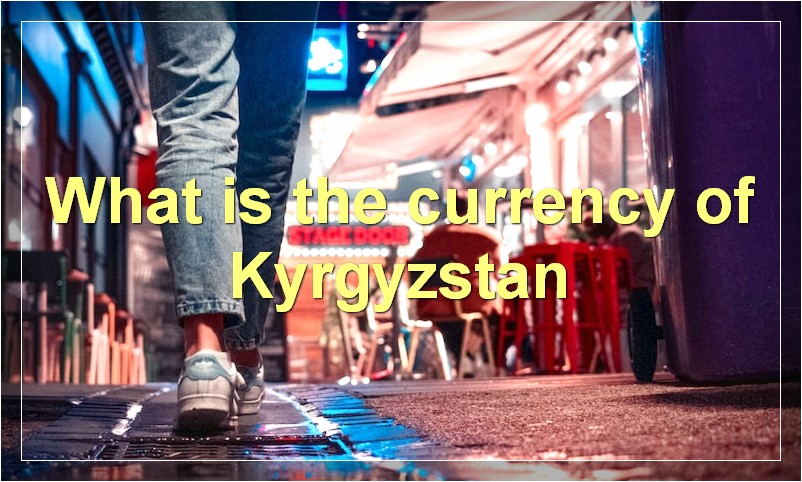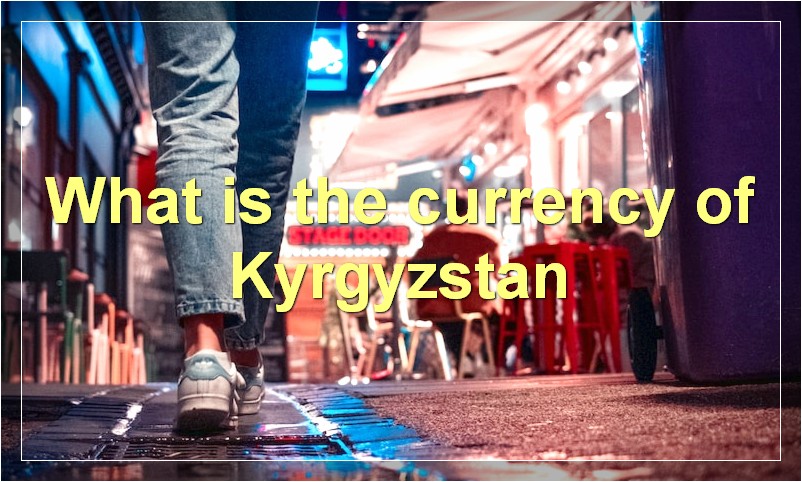1. Kyrgyzstan is a landlocked country in Central Asia bordered by Kazakhstan, Uzbekistan, Tajikistan, and China.
2. The landscape of Kyrgyzstan is mostly mountainous with glaciers, alpine lakes, and rivers.
3. Over 80% of the population is Kyrgyz, with significant minority populations of Uzbeks and Russians.
4. The official language is Kyrgyz, with Russian also widely spoken.
5. Islam is the predominant religion.
6. The capital and largest city is Bishkek.
7. Kyrgyzstan’s economy is largely dependent on agriculture and mining.
8. Tourism is an increasingly important sector of the economy.
9. The country is known for its traditional music, horsemanship, and textiles.
10. Kyrgyzstan has a history of political instability and violence, particularly during the 1990s.
What is the capital of Kyrgyzstan
Bishkek is the capital of Kyrgyzstan, and is its largest city. The city was founded in 1825 as a Russian military outpost, and has since grown into a thriving metropolis with a population of over 1 million people. Bishkek is a modern city with a cosmopolitan vibe, and is home to many universities, museums, and theaters. It is also a popular tourist destination, due to its proximity to the Tian Shan mountains.
What is the currency of Kyrgyzstan

The Kyrgyzstan som is the national currency of the Kyrgyz Republic. The ISO 4217 code for the Kyrgyzstan som is KGS. The som is divided into 100 tyiyn.
What are the top attractions in Kyrgyzstan
Kyrgyzstan is a landlocked country in Central Asia, bordered by Kazakhstan, Uzbekistan, Tajikistan, and China. Its capital and largest city is Bishkek. Kyrgyzstan’s mountainous terrain extends across much of the country and more than 90% of the land is covered by mountains.
Some of the top attractions in Kyrgyzstan include Ala-Archa National Park, Lake Issyk-Kul, Son-Kul Lake, Tash Rabat Caravanserai, and the Osh Bazaar. Ala-Archa National Park is a protected area located in the Tian Shan mountain range. The park is home to a variety of wildlife, including the endangered snow leopard. Lake Issyk-Kul is the largest lake in Kyrgyzstan and one of the largest high-altitude lakes in the world. Son-Kul Lake is a alpine lake located in the Naryn Province. It is Kyrgyzstan’s second largest lake and a popular destination for hiking and horseback riding. The Tash Rabat Caravanserai is a well-preserved 15th century structure that was once used as a resting place for traders traveling along the Silk Road. The Osh Bazaar is one of the largest markets in Kyrgyzstan and a great place to find souvenirs and local handicrafts.
What is the climate like in Kyrgyzstan
The climate of Kyrgyzstan varies depending on the region, but is generally a continental climate with very cold winters and hot summers. The average January temperature in Bishkek, the capital, is -4.4 degrees Celsius (24.1 degrees Fahrenheit), while the average July temperature is 23.3 degrees Celsius (73.9 degrees Fahrenheit).
How large is Kyrgyzstan
Kyrgyzstan is a landlocked country in Central Asia with an area of 199,951 square kilometers. It is bordered by Kazakhstan to the north, Uzbekistan to the west, Tajikistan to the southwest and China to the east. Its capital and largest city is Bishkek.
What languages are spoken in Kyrgyzstan

Kyrgyzstan is a landlocked country in Central Asia with a population of around 6 million people. The official language of Kyrgyzstan is Kyrgyz, a Turkic language, however, Russian is also widely spoken throughout the country. In addition to Kyrgyz and Russian, there are also many minority languages spoken in Kyrgyzstan such as Uzbek, Tajik, Dungan, Uyghur and Kazakh.
What is the history of Kyrgyzstan
Kyrgyzstan is a landlocked country located in Central Asia. The country is bordered by Kazakhstan to the north, Uzbekistan to the west, Tajikistan to the southwest, and China to the east. Kyrgyzstan covers an area of 199,951 square kilometers (77,181 square miles) and has a population of 5.7 million people. The capital city of Bishkek has a population of about 1 million people.
The history of Kyrgyzstan can be traced back to the 2nd century BC when it was inhabited by the nomadic Scythians. The name Kyrgyz is thought to be derived from the Turkic word for “forty,” possibly referring to the forty tribes of Manas, a legendary hero who united the Kyrgyz people. In the 8th century, the Kyrgyz came under the rule of the Uyghur Khaganate.
In the 12th century, Kyrgyzstan was conquered by the Mongols. It later became part of the Uzbek Khanate of Kokand. In 1876, Kyrgyzstan was annexed by Russia as part of the Turkestan Krai. It became a Soviet Republic in 1936 and achieved independence in 1991 following the dissolution of the Soviet Union.
Since independence, Kyrgyzstan has faced many challenges including political instability, economic hardship, and ethnic conflict. However, the country has made significant progress in recent years and is now considered to be relatively stable and prosperous compared to other countries in Central Asia.
What is the government of Kyrgyzstan like
Kyrgyzstan is a unitary parliamentary republic, with its capital being Bishkek. The government is headed by the President, who is elected by the people, and the Prime Minister, who is nominated by the parliament. The parliament itself is unicameral, and consists of 120 members, who are elected for a five-year term. The judicial branch is represented by the Supreme Court, which is the highest court in the country.
What are the people of Kyrgyzstan like
The people of Kyrgyzstan are some of the most hospitable and friendly people you will ever meet. They are always ready to help a stranger, and they are very proud of their culture and traditions. Kyrgyzstan is a very diverse country, with many different ethnic groups and religions. The people are very tolerant of different cultures and beliefs, and they are very welcoming to foreigners.
Where is Kyrgyzstan located
Kyrgyzstan is located in Central Asia. It is bordered by Kazakhstan to the north, Uzbekistan to the west, Tajikistan to the southwest, and China to the east.

